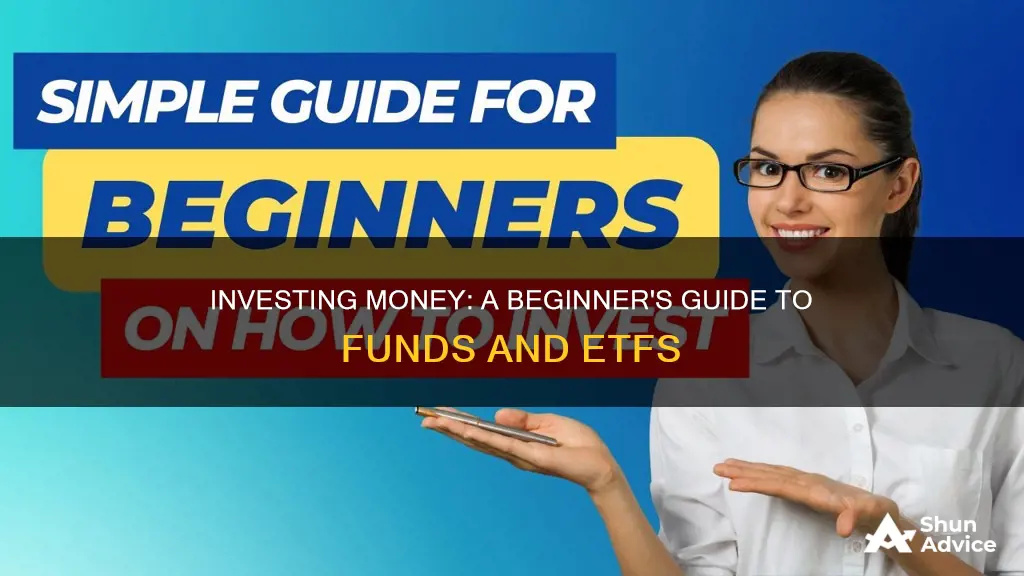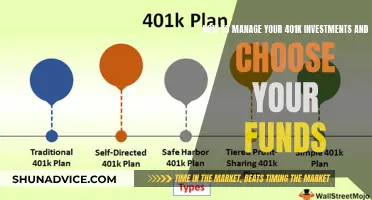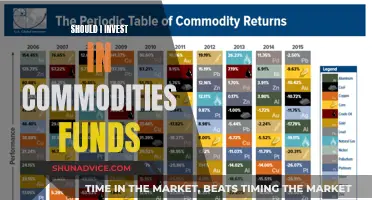
Exchange-traded funds (ETFs) are a great way for beginners to start investing. They are simple to understand and can generate good returns without requiring much expense or effort from investors. ETFs are traded on exchanges like stocks, and you can buy and sell them anytime the exchange is open. They are also very accessible, with low investment thresholds, and you can start investing in ETFs with as little as $50. ETFs are similar to mutual funds in that they hold a collection of stocks and bonds in a single fund, but they are generally cheaper and have lower management fees. ETFs are also more liquid and easier to buy and sell than mutual funds.
Before investing in ETFs, it is recommended to try your hand at a practice portfolio to better understand the entire investment process. Most online brokers provide practice accounts where you can learn about ETF investing without risking any of your actual savings. Once you have a good understanding of how ETFs work, you can open a brokerage account and start investing in ETFs that align with your financial goals and risk tolerance. It is important to consider the costs involved, such as transaction fees and the expense ratio, which is the annual fee charged by the ETF.
Overall, ETFs are a great option for beginners looking to invest in the stock market due to their accessibility, diversification, and potential for good returns.
| Characteristics | Values |
|---|---|
| Definition | Exchange-traded funds (ETFs) |
| How to buy | Via a robo-advisor, a financial advisor, or a self-directed online brokerage account |
| How to choose | Research the type of fund, determine the number of shares, and make the order |
| Pros | Low barrier to entry, diversification, easy to buy and sell, tax-efficient |
| Cons | Trading costs, volatility |
| Best for | Long-term investment |
What You'll Learn

Open a brokerage account
Opening a brokerage account is a crucial step in your investment journey. It is the account where your ETFs will be held. You can open an account with an online broker, often for free and without much hassle. The process is similar to opening a bank account and can be done with just a few clicks. However, it may take a few days to receive all the necessary documents and for the account to be activated.
When choosing a broker, you may want to consider "neobrokers". These are online brokers that often charge very low fees or no fees at all for buying and selling ETFs. They also offer ETF savings plans at excellent rates. It is worth checking out an Online Broker Comparison to help you decide.
Once you have decided on a broker, you can open what is known as a custody account via their app or website. In many cases, you can identify yourself using video identification. After completing the formalities, you play the waiting game. In the meantime, you can decide on a global ETF and transfer money directly into your custody account, so that you are ready to invest as soon as your account is open.
It is important to understand the costs involved. While many online brokers provide commission-free trading, there may be other fees, such as transaction costs, account minimums, transfer fees, and costs for additional research.
Additionally, be aware of the fees charged by the ETFs themselves for managing the funds. This is known as the expense ratio and is listed as an annual percentage. For example, a 1% expense ratio means you will pay $10 in fees for every $1000 invested.
Overall, by taking the time to research and compare different brokers and understand the costs involved, you can make an informed decision when opening a brokerage account, which is an essential step in your investment journey.
Growth Funds: Why You Should Invest Now
You may want to see also

Choose your first ETFs
When choosing your first ETFs, it's important to consider your financial goals, risk tolerance, and the amount you can afford to invest each month. Here are some key factors to keep in mind:
- Expense ratios: ETFs charge fees known as expense ratios, which are listed as an annual percentage. For example, a 1% expense ratio means you'll pay $10 in fees for every $1,000 invested. Lower expense ratios are generally preferable as they save you money in the long run.
- Passive vs. active ETFs: Passive ETFs, also known as index funds, track a stock index like the S&P 500. Active ETFs, on the other hand, hire portfolio managers to actively invest their money and aim to beat the index's performance. Passive ETFs are generally recommended for beginners as they are cheaper and most actively managed funds don't beat their benchmark index over time.
- Diversification: ETFs offer instant diversification by allowing you to invest in a variety of stocks, bonds, and other assets. This helps reduce risk and safeguard your portfolio against market volatility. Look for ETFs that track broad market indexes or focus on specific sectors or industries that align with your investment goals.
- Performance: While past performance doesn't guarantee future results, it can give you an idea of how an ETF has performed relative to its benchmark. For passive ETFs, look for those that have performed closely in line with their index. For active ETFs, look for those that have consistently outperformed their benchmark over longer periods (3, 5, or 10 years).
- Trading volume and liquidity: Higher trading volume indicates higher liquidity, making it easier to buy or sell ETF shares. ETFs with low trading volume may be harder to unload when it's time to sell.
- Underlying index or asset: Consider the underlying index or asset class the ETF is based on. For diversification purposes, it's generally preferable to invest in ETFs that track broad, widely followed indexes.
- Issuer reputation: Consider the company that offers and manages the ETF. Established ETF providers with strong reputations and long track records are generally considered more reliable.
- Vanguard S&P 500 ETF (VOO): Tracks the S&P 500 index, investing in large U.S. companies.
- Schwab U.S. Mid-Cap ETF (SCHM): Focuses on midsize U.S. companies.
- Vanguard Russell 2000 ETF (VTWO): Invests in smaller U.S. companies.
- Schwab International Equity ETF (SCHF): Focuses on larger non-U.S. companies.
- IShares Blockchain and Tech ETF: Tracks the performance of the blockchain and tech sector.
- Schwab Emerging Markets Equity ETF (SCHE): Invests in companies from countries with developing economies.
- Vanguard High-Dividend ETF (VYM): Focuses on stocks that pay above-average dividends.
Smart Mutual Fund Investing: Minimizing Fees, Maximizing Returns
You may want to see also

Understand ETF basics
Understanding the basics of ETFs is crucial before diving into the world of investing. Here's a detailed overview of the key concepts related to Exchange-Traded Funds (ETFs) for beginners:
Passive vs. Active ETFs: ETFs can be classified into two main types: Passive ETFs and Active ETFs. Passive ETFs, also known as index funds, are designed to track a specific stock index, such as the S&P 500. They aim to match the performance of the underlying index. On the other hand, Active ETFs hire portfolio managers to actively invest their money, with the goal of outperforming the index.
Expense Ratios: ETFs come with fees known as expense ratios. These fees are presented as an annual percentage and are deducted from the fund's income. For example, a 1% expense ratio means you'll pay $10 in fees for every $1,000 invested. Lower expense ratios are generally preferable as they result in lower costs over time.
Dividends and DRIPs: Most ETFs distribute dividends to their investors. You have the option to receive these dividends as cash payments or reinvest them through a dividend reinvestment plan (DRIP). DRIPs allow your investment to grow over time by automatically reinvesting the dividends.
ETF Taxes: It's important to understand the tax implications of investing in ETFs. When purchased through a standard brokerage account (not an IRA), ETFs can result in taxable income. Any gains from selling ETFs are typically subject to capital gains tax, and dividends received may also be taxable. However, investing in ETFs through an IRA can offer tax advantages, depending on the type of IRA.
ETF Structure: ETFs are similar to mutual funds in that they both provide a way to invest in a diversified basket of securities. However, ETFs are traded on stock exchanges throughout the day, just like individual stocks. They are typically more liquid and have lower fees than mutual funds. Additionally, ETFs often have lower minimum investment requirements, making them accessible to a wider range of investors.
ETF Advantages: ETFs offer several benefits to investors, especially beginners. They provide exposure to a diverse range of stocks, bonds, and other assets at a relatively low cost. They also take the guesswork out of stock investing by allowing investors to match the market's performance over time. Additionally, ETFs are more liquid than mutual funds, making them easier to buy and sell through online brokers.
ETF Disadvantages: While ETFs offer numerous advantages, it's important to consider their potential drawbacks. Since ETFs own a diverse assortment of stocks, they may not offer as much return potential as investing in individual stocks. Additionally, while ETFs are often low-cost, they do incur management fees, and trading costs can add up over time.
Invest Wisely: Bitwise Index Fund Strategies for Beginners
You may want to see also

Understand ETF taxes
If you buy ETFs in a standard brokerage account (not an IRA), you should know that they could result in taxable income. Any gains you make from selling an ETF will be taxed according to capital gains tax rules, and any dividends you receive will likely be taxable as well.
If you hold an ETF for more than a year, you'll pay up to 20% in long-term capital gains tax. Individuals with substantial investment income may also pay an additional 3.8% net investment income tax (NIIT). ETFs held for less than a year are taxed at ordinary income rates, which go up to 37%, plus an additional 3.8% NIIT for some.
If you sell shares in most ETFs within a year, any profits are taxed as a short-term capital gain. ETFs held for longer are considered long-term gains and given a lower rate.
If you sell an ETF and buy the same (or a substantially similar) ETF after less than 30 days, you may be subject to the wash sale rule. This means the loss can't be used to offset other capital gains and the disallowed loss is added to the cost basis of the new securities purchased, delaying any tax benefits until the replacement security is sold.
ETFs are often said to have better tax treatment than mutual funds because of their structure. They create and redeem shares using in-kind transactions, which aren't considered sales and, therefore, don't trigger taxable events.
That said, ETFs that hold dividend-paying stocks will ultimately distribute earnings to shareholders—usually once a year—while dividend-focused ETFs may do so more frequently. Qualified dividends may be taxed at lower capital gains rates if certain conditions are met—otherwise, you'll be taxed at the ordinary income rate, which tops out at 40.8%. Interest distributed to shareholders by bond ETFs—monthly, in many cases—is also taxed as ordinary income.
The tax implications of ETF investing depend on factors such as capital gains distributions, capital gains taxes upon selling, and tax efficiency. Additionally, investors can control the timing of capital gains recognition by choosing when to sell ETF shares and in what investment vehicles to hold ETFs.
If you invest in ETFs through an IRA, you won't have to worry about capital gains or dividend taxes. In a traditional IRA, money in the account is only considered taxable income after it is withdrawn, while Roth IRA investments aren't taxable at all in most cases.
A Guide to Investing in VC Funds in India
You may want to see also

Compare ETFs with mutual funds
Exchange-traded funds (ETFs) and mutual funds are similar in that they both represent professionally managed collections (or "baskets") of individual stocks or bonds. They both offer a wide variety of investment options and are overseen by professional portfolio managers.
However, there are some key differences between the two types of investment vehicles. Here are some of the most notable differences:
- How they are traded: ETFs trade like stocks and are bought and sold on a stock exchange, while mutual funds are priced once per day and are typically purchased through a brokerage or directly from the issuer.
- Minimum investment: ETFs do not require a minimum initial investment and are purchased as whole shares, while mutual funds usually have a flat dollar amount as the minimum initial investment.
- Pricing: ETFs have real-time pricing, while mutual funds are priced at the end of the trading day, so everyone who buys or sells that day gets the same price.
- Control over trade price: ETFs allow for more hands-on control over the price of your trade, as you can choose how many shares you want to purchase. Mutual funds, on the other hand, are based on a set dollar amount.
- Automatic investments and withdrawals: ETFs do not allow for automatic investments or withdrawals, while mutual funds do.
- Active vs passive management: Most ETFs are passively managed, meaning they track a particular stock index. Mutual funds can be actively or passively managed, but most are actively managed, meaning fund managers attempt to beat a benchmark index.
- Tax efficiency: ETFs are generally considered more tax-efficient than mutual funds, as they may generate fewer capital gains for investors due to lower turnover.
- Expense ratios: ETFs typically have lower expense ratios than mutual funds, but it's important to consider transaction costs when buying or selling ETFs.
In summary, both ETFs and mutual funds offer diversified investment options, but they differ in how they are traded, priced, and managed. ETFs offer more flexibility and control over your trades, while mutual funds may be more suitable for those who want a simpler, more hands-off approach.
Investing in Nifty Bank Index Fund: A Comprehensive Guide
You may want to see also
Frequently asked questions
An exchange-traded fund (ETF) is a fund that holds a collection of stocks, bonds, commodities, or a combination of these. ETFs are traded on an exchange and can be bought and sold anytime the exchange is open.
The first step is to open a brokerage account. You can then decide which ETFs to buy and place your order.
You can use a robo-advisor, which uses algorithms to help you choose and manage your investments, or you can consult a financial advisor. You can also do your own research to decide which ETFs to buy.
ETFs are great for beginners as they are relatively inexpensive, easily accessible, and diversified. However, they may have trading costs, and they are not immune to market volatility.
There is no minimum amount required to invest in ETFs. You just need enough to cover the price of one share and any associated fees or commissions.







